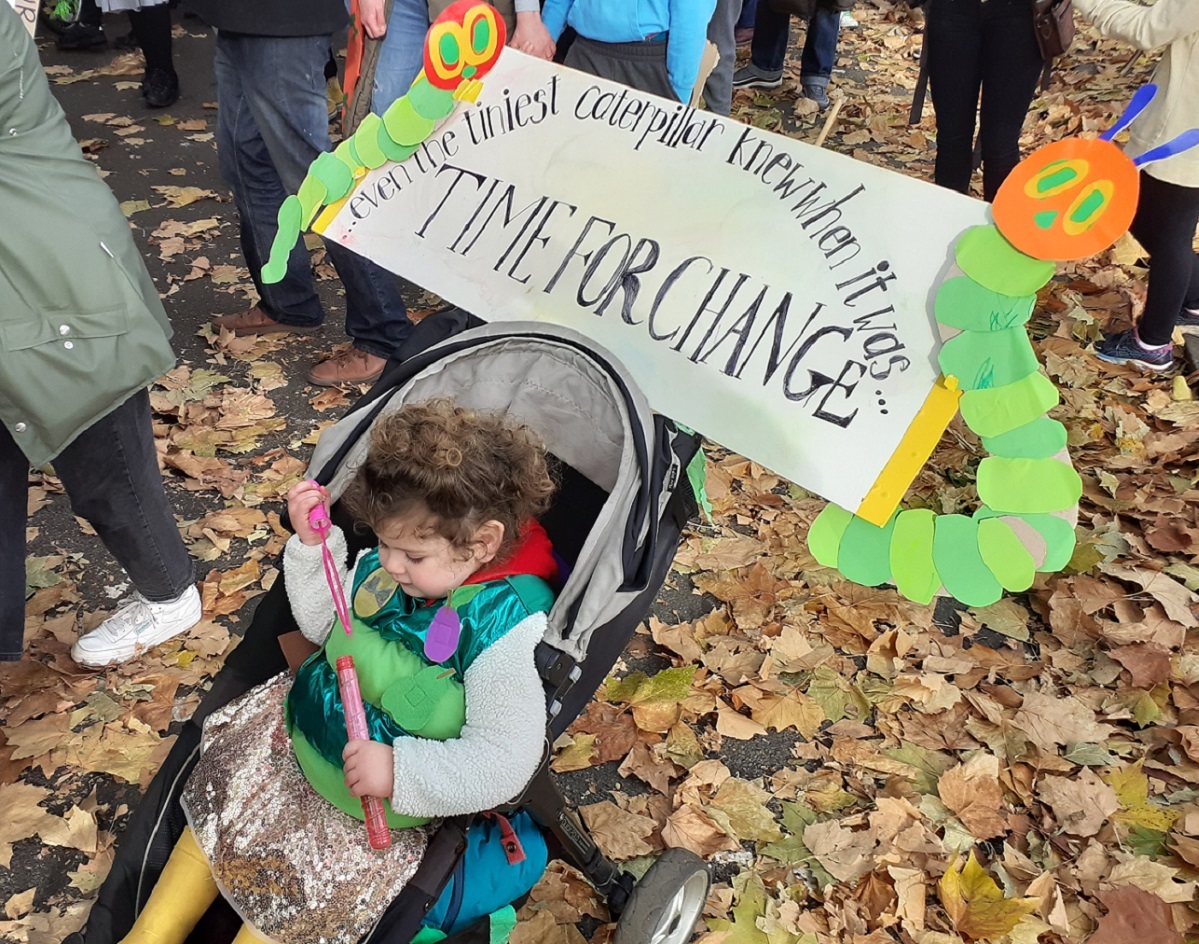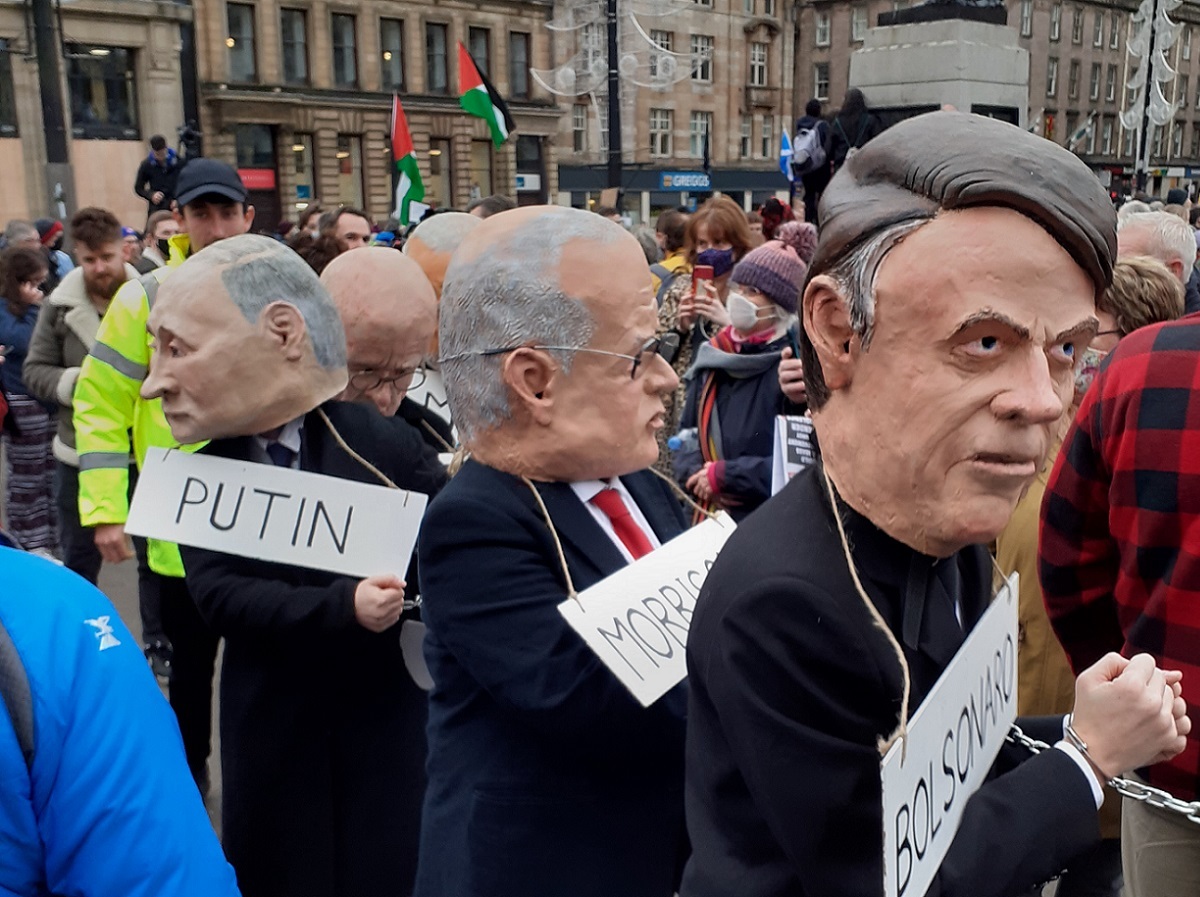
“It’s hard not to see the Glasgow Climate Pact as an elaborate suicide note couched in the language of blah-blah-blah”: Tom Scott’s powerful COP26 report.
I returned home from a few days at COP26 in Glasgow more bone-tired than I think I’ve ever been in my life, and watching the news coming out of the conference since then hasn’t helped to lift the spirits.
The journey from Cornwall to Glasgow and back had been somewhat fraught – on the outward leg, my second train of the day was cancelled, meaning all the subsequent connections were missed. During a long wait between trains I googled flights to Glasgow and discovered that flying would have cost about half the price of my rail fare. Soon domestic flights will be even cheaper, thanks to Rishi Sunak’s slashing of passenger duty on these.
Climate emergency? What climate emergency?
The atmosphere in Glasgow when I finally arrived was very different from that at the G7 summit in Cornwall in June, and not just because of the sombre November weather and the city’s imposing gothic architecture.
The G7 was never really going to be much more than a leaders’ jolly in a photogenic location, but a great deal more was hanging on the outcome of COP26. This was a meeting that would determine whether the world’s nations would have the courage and imagination to take action on the scale and at the speed that scientists, with increasing desperation, have been telling them is imperative.
I wasn’t a delegate to the conference, so – like most of the many thousands who’d converged on Glasgow from all over the world – had no access to the massive, state-of-the-art conference centre on the banks of the Clyde in which the negotiations were taking place.
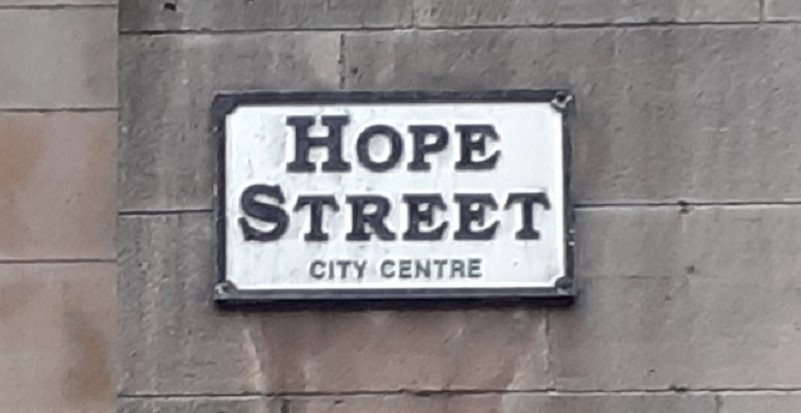
One of the first things that caught my eye on leaving Glasgow Central Station was a sign that read ‘Hope Street’. I wanted to believe this was an omen. Like so many, my hope was that this conference might mark a decisive turn off the highway to hell down which the world is hurtling, and that protests around it would add to a sense of urgency among those on the inside with the power to make decisions.
These protests were indeed massive. The first I took part in was organised by Fridays for Future, the schools’ climate strike movement, on Youth Day at COP26. Walking to Kelvingrove Park, where the march started, I fell in with a primary school teacher whose pupils had made their own placards for the event. She told me, her voice full of emotion, that she was not normally one to go to protests but that the children’s enthusiasm to save the world had been infectious.
It seemed as if every young person in Scotland had missed school to be there, and a huge amount of creativity had gone into their hand-painted messages. I’M MISSING MY LESSONS TO TEACH YOU A LESSON, one read. Another carried the legend: NO IRN BRU ON A DEAD PLANET. Medical students warned: ACT NOW OR THE DIAGNOSIS WILL BE TERMINAL. An infant’s pushchair had been decorated with the message: “Even the tiniest caterpillar knew when it was TIME TO CHANGE”. One cardboard sign read simply: RESPECT YOUR MAW (Scots for mother).
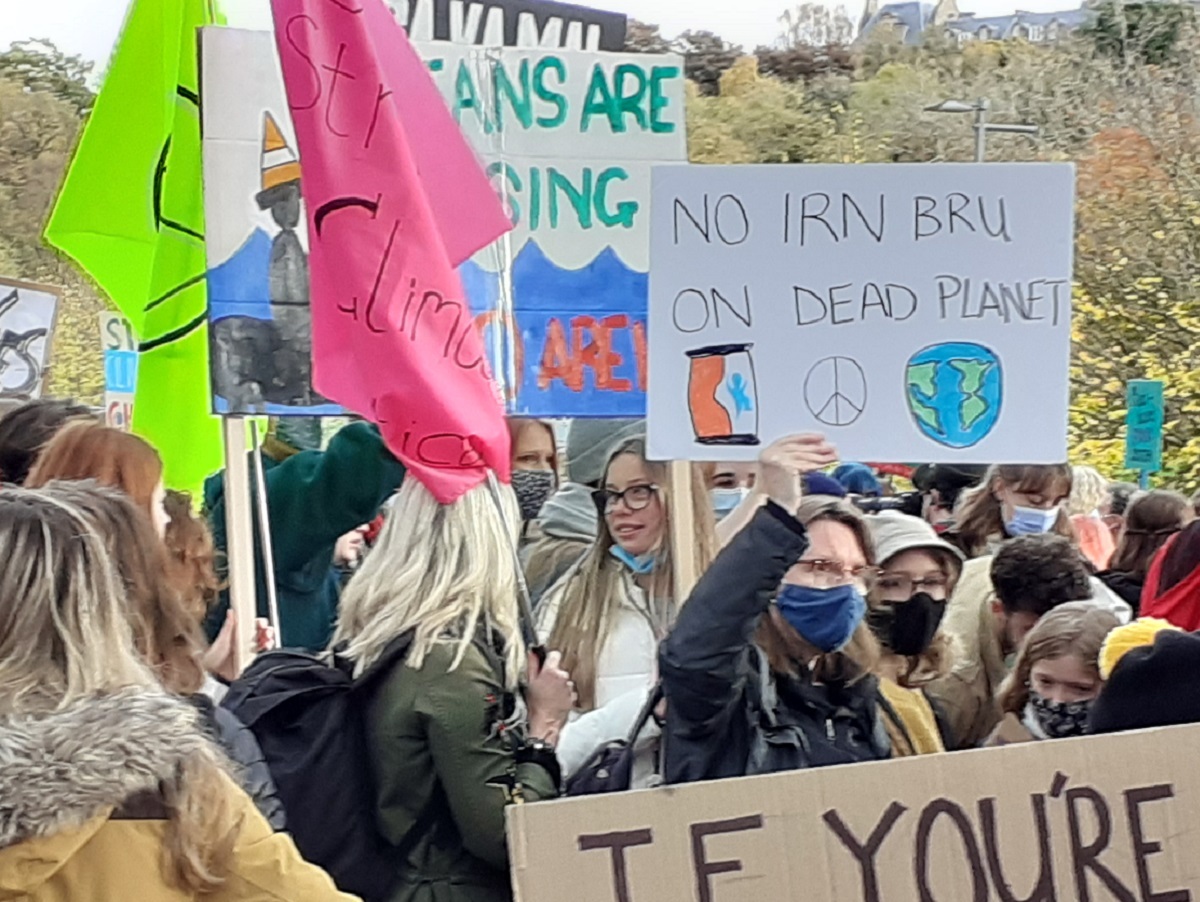
But the overwhelmingly loud cry was for climate justice. These young people were not just marching for their own futures, but in solidarity with the many indigenous people in the Global South who are already seeing their communities devastated by the first impacts of climate breakdown.
SCOTLAND’S YOUNG PEOPLE ARE RESPONSIBLE PEOPLE, read one placard – and who could doubt it?
The march ended with a rally at which representatives of some of these indigenous communities spoke. Adri Maffioletti, from the Guarani people of the Brazilian Amazon, called out her country’s president, Jair Bolsonaro:
“He is not here. Because he doesn’t have the capacity… Because he’s lying all the time – he’s lying about Brazilian people, he’s lying about preservation of our forest. Liar, liar, our forests are on fire. We are in an emergency. Our country is collapsing.”
Mikaela Loach of the Stop Cambo campaign called out Boris Johnson’s government for its licensing of new oil fields and continuing payments of subsidies to fossil fuel companies:
“I will be taking the UK Government to court over the North Sea oil and gas subsidies… We will hold them accountable and with the support from all of you we will end public payments for big polluters.”
The rally closed with a speech by the person who has done more than any other to raise the climate alarm, Greta Thunberg:
“This is no longer a climate conference. This is now a Global North greenwash festival. A two-week festival of business as usual and blah blah blah. The voices of future generations are drowning in their greenwash and empty words and promises. But the facts do not lie. And we know that our emperors are naked.”
Contrasting the hollow promises of the politicians inside their fenced conference centre with the passion and commitment of the young activists in the crowd, she said: “They cannot ignore the scientific consensus and above all, they cannot ignore us, the people, including their own children. They cannot ignore our screams as we reclaim our power… This is what leadership looks like.”
The following day saw an even bigger protest, organised by the COP26 coalition. The energy on this march felt very different – there was drumming, chanting, bagpipes and a mass of Saltires amid all the other banners, but the rain bucketed down and the mood was one of grim determination.
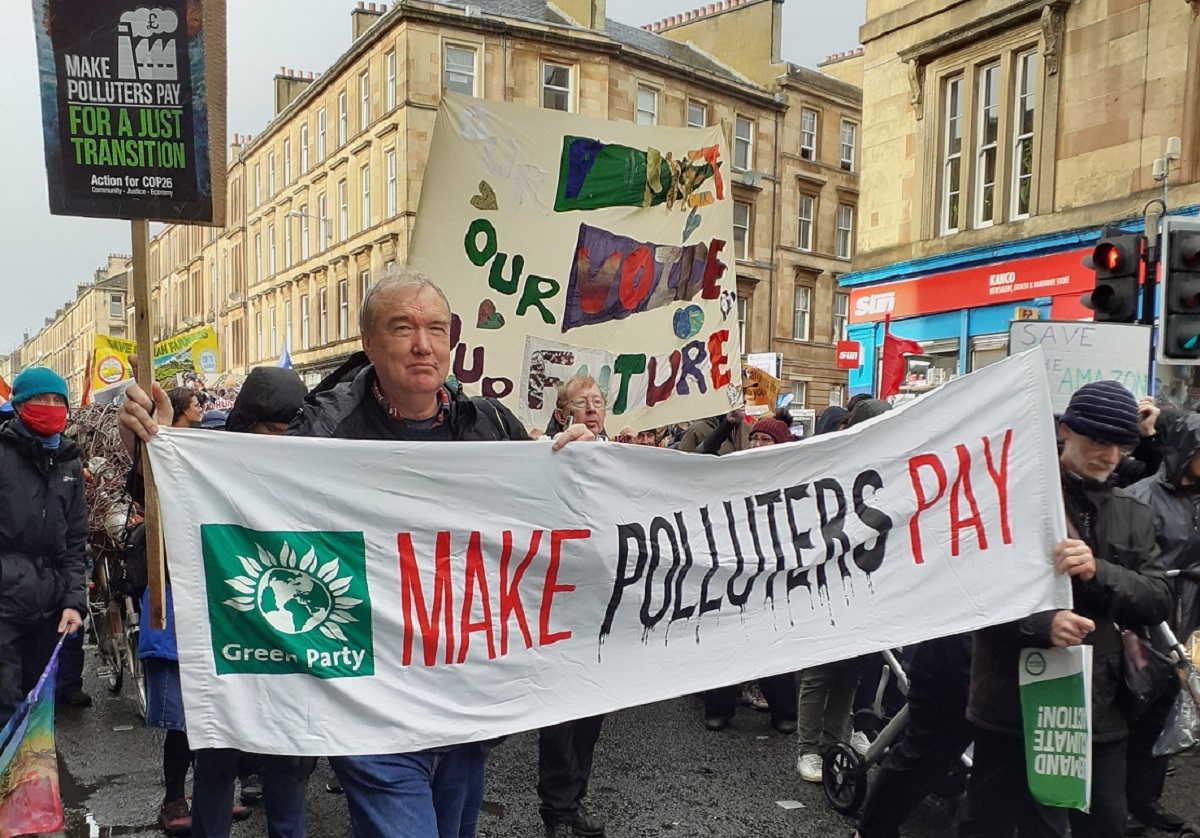
The policing was more heavy-handed, too. Some activists were arrested and a line of mounted police, their horses clad in protective eye-shields, made me think the Four Horsemen of the Apocalypse had been recruiting.
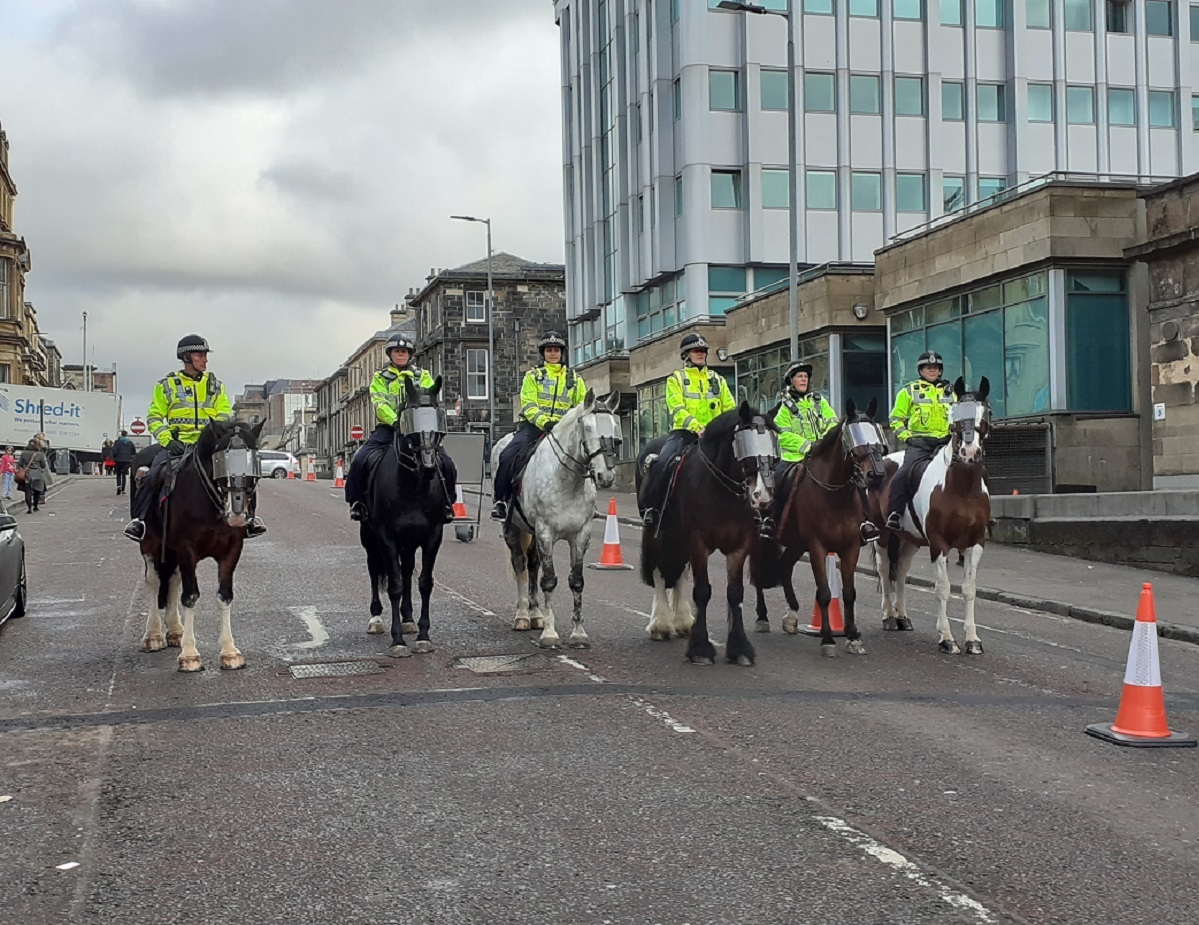
As well they might. For the news trickling out from inside the tightly secured conference centre was increasingly grim. By the midpoint of COP26, it was becoming ever clearer that hopes of the summit resulting in meaningful action to ‘keep 1.5 alive’ were fading.
As Climate Action Tracker, a scientific service that analyses governments’ progress in relation to that goal, pointed out, “there is a massive credibility, action and commitment gap that casts a long and dark shadow of doubt over the net zero goals”. Even if governments met their stated commitments – a very big if – this would still result in a catastrophic 2.4˚C of heating in coming decades. And on current evidence of actual policies, the temperature rise will be even higher – a certain death sentence for billions of people around the world.
A glimmer of hope came with the announcement by US presidential envoy for climate, John Kerry, that China and America, which together account for about 40% of global emissions, had agreed to work together to “raise climate ambition in this decisive decade”. Whether this will amount to more than a rhetorical gesture remains unclear, but that these two economic behemoths were willing to set aside their mutual hostility to address the imminent catastrophe we all face was at least a positive straw in the wind.
Far less positive was the mention of carbon capture and storage (CCS) in the China-US declaration. This largely unproven technology is being seen as a licence to continue extracting and burning coal and other fossil fuels.
At one of the fringe events I attended in Glasgow, Julian Allwood – a professor of engineering and the environment at Cambridge University – provided a sobering reality check on this illusory technofix, which is being heavily promoted by the fossil fuel industry:
“COP26 plans are assuming at least 10,000 megatons of carbon capture and storage a year. At present total global capacity of this ‘solution’ is around one megaton.”
As I was writing this piece, successive drafts of the COP26 final statement emerged, each of them full of grandiose resolutions. But as always, the devil is in the detail, or rather the lack of detail. The final statement had to be agreed by all parties, and some of these pushed hard to make sure that this remained as bland and vague as possible.
On Wednesday, Mary Robinson, the former president of Ireland who is now chair of The Elders – the group of former leaders working together for peace, justice and human rights – called out the governments that have been obstructing progress towards a strong and binding final statement. She had to fight back her tears.
On the conference floor, EU climate commissioner Frans Timmermans sought to remind leaders of what was at stake for every family on the planet when he held up a photo of his grandson and reflected on the grim future that awaited him if governments failed to reach a strong agreement:
“If we fail, he will fight with other human beings for water and food. That’s the stark reality we face… This is personal. This is not about politics. I don’t live in Palau. I don’t live on Barbados. I don’t live on the Marshall Islands. But there it’s even far more personal because you’re standing with your feet in the water. This is what we need to address today.”
If only more leaders showed the same depth of personal emotion as Timmermans and Robinson about the destruction of our climate system, and the same outrage at the efforts of the fossil fuel kleptocracies to sabotage efforts to save it.
Because what’s now clear is that governments deeply enmeshed with the fossil fuel industry have succeeded in taking out precisely those details that might actually result in meaningful action. The language of the final declaration – the Glasgow Climate Pact – is woefully weak. Each point starts with a verb such as “invites’, “notes”, “recognises”, “requests” or – at its strongest – “urges”, rather than an unequivocal instruction to act.
Perhaps most shameful of all were the efforts of certain governments, not least those of Scott Morrison in Australia and Narendra Modi in India, to keep almost any mention of fossil fuels – the direct cause of the climate crisis – out of the final text. This would have been akin to producing an agreement to abolish weapons of mass destruction without mentioning any actual weapons of mass destruction. And that is exactly what coal, oil and gas are – weapons of mass destruction that have already been deployed in massive quantities and are rapidly destroying any viable future for humanity.
As it is, the only direct reference to fossil fuels in the entire document is in a mealy-mouthed call to accelerate “efforts towards the phase-down of unabated coal power and inefficient fossil fuel subsidies”. “Phase-down” replaced “phase-out” at the insistence of China, Australia and India. For “unabated” read “without unproven and almost non-existent CCS technology”. As for “inefficient”, that is left to governments to interpret as they see fit.
It’s shameful that Boris Johnson’s government, with the presidency of COP26, has not done more to put its weight behind a more positive outcome. It could, for example, have joined with Denmark and other countries in the Beyond Oil and Gas Alliance and announced an end to all drilling licences in the North Sea. It could have announced an end to all UK government subsidies for fossil fuels, which as John Kerry pointed out are “the definition of insanity”. It could have committed to much greater climate funding for poorer countries, as Scotland’s government has done with its Climate Justice Fund.
As things stand, it’s hard not to see the Glasgow Climate Pact as an elaborate suicide note couched in the language of blah-blah-blah. Or, perhaps more accurately, a note that attempts to disguise its authors’ abject failure to stop profit-driven mass murder on a global scale. Shortly before agreement on a final text was announced, Alok Sharma – who as COP President took his responsibility more seriously than the leader of his government – seemed to show an awareness of just how badly the conference had failed to meet expectations.
As the Maldives Environment Minister Aminath Shauna put it as the contested draft neared final approval: “It will be too late for the Maldives.” And not just for the Maldives: the same global heating that will wipe these and other low-lying island nations off the map will also make large parts of our planet effectively uninhabitable.
So where do we go from here?
There are no easy answers to that question. But perhaps COP26 needs to be seen as a sign that the change that has to happen is not going to come from the top down, or not at anything like the speed that is needed.
Our ‘leaders’ have not taken the decisive action needed to avert disaster, but that doesn’t mean there’s nothing we can do. Although the Glasgow Climate Pact essentially kicks the can down the road to COP27 next year, it does at least acknowledge that deep emissions cuts are needed this decade. It would not have done so without intense pressure from activists and civil society organisations, and we need to redouble that pressure.
At the same time, we need to use every instrument at our disposal, including laws designed to protect human life and prosecute genocide, to hold accountable the companies and governments that are driving the wave of mass death that’s rapidly bearing down on us.
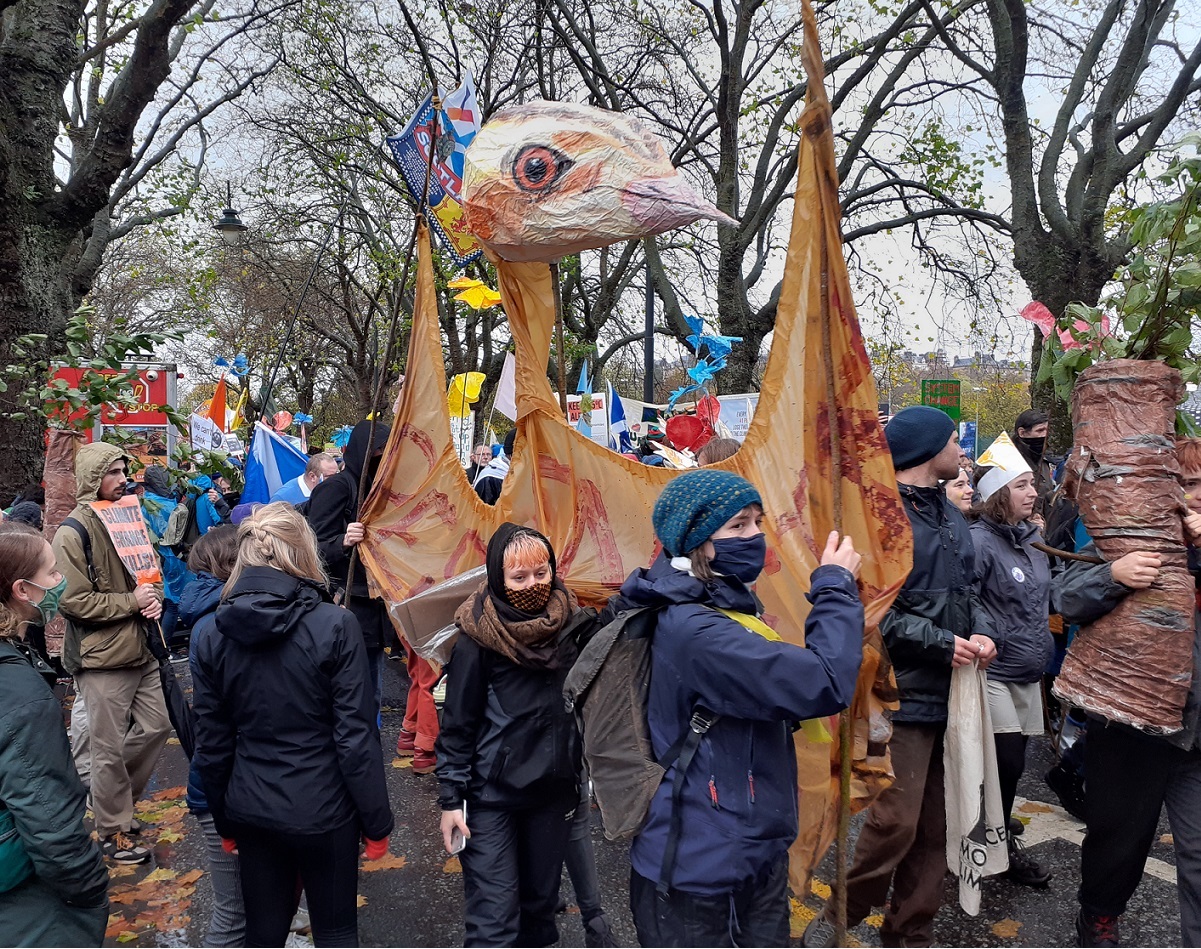
We need more non-violent direct action to physically disrupt the ecocidal and genocidal activities of those companies and governments. We need to exert every possible pressure on the banks and investors who provide the finance without which fossil fuels cannot be extracted. At local level, we need to do everything we can to get these fuels out of our lives and our communities, by resisting new roads, new airports and anything else that worsens the irreversible harm being done to our planetary life-support system.
And those of us who are lucky enough to live in democracies need to stop voting for the politicians who have failed so dismally to address the gravest crisis humanity has ever faced.
